Soviet Baneblade! Why, Just, WHY?!
"Ready to unleash eleven barrels of hell!"
Right, so, what the hell is this thing?! Well, I teased it a while back in a post called "More Dumb Tank Fanfiction," because I was playing around, and I eventually came up with a backwards T-10 design codenamed Object 735-GK (Grozniy Klinok), or the IS-11. I have since completely re-designed it, and while I had it more-or-less finished two months ago, I kept tweaking it to make it look better. I also had to figure out a way to solve a particular problem, which I will go into in a bit.
So, why the name "Grozniy Klinok?" Well, assuming you read the post about this monstrosity's earlier incarnation, then you aware that is Russian for "Formidable Blade," which may seem like an odd choice on my part, but here's why I chose it: "Grozniy" (Cyr. Грозный) was the moniker of Ivan IV, Grand Prince of Moscow, better known as Ivan the Terrible. His life overlapped with that of Elizabeth I of England, who sent an emissary to Moscow to meet the Tsar. This is relevant because, at the time, the word "terrific" meant "terrifying," and the word "terrible" has also changed in meaning since then.
As for this absurdly large tank with six turrets (which is not the first six-turret tank I've designed, by the way), while I'm keeping the Object 735-GK designation, I'm not going to call this thing the IS-11 anymore, for the simple reason that, even if he hadn't been assassinated, Stalin would not likely have lived past 1966, when much of the technology on this machine was developed. Considering that the Soviet Union had already abandoned the use of heavy tanks long before then (as had everyone else), verisimilitude basically goes out the window at this point, but that doesn't affect my OCD when it comes to tank design.
So, as you can probably tell, I took a bunch of existing Soviet weaponry and slapped it onto an oversized tank hull. The main turret is taken from a T-10, and here's an actual T-10 for comparison:
However, the main gun of the Grozniy Klinok is a much larger 152,4mm cannon. This one has the same design as the 122mm M-62-T2 of the T-10M or the 130mm M-65 of Object 279, it's just bigger. I don't have a model number for it, because I don't know of a 152,4mm tank gun made at that time. Likewise, the coaxial weapon is a 105mm low-pressure smoothbore gun that I don't have a model number for, but it's a larger version of the 73mm 2A28 Grom that the sponson turrets have. All three of those smaller turrets are BMP-1 turrets, but one has been modified to mount twin 14,5mm KPVT machine guns. You can see the entire list of weapons below:
This is taken from a full blueprint that I drew up:
In case you can't see the parts list well enough to read it, the Grozniy Klinok is armed with a 152,4mm rifled cannon, a coaxial 105mm low-pressure smoothbore gun, a 203mm hull-mounted B-4 howitzer, two 73mm 2A28 Grom low-pressure smoothbore guns, and six 14,5mm KPVT machine guns. The hull-mounted howitzer is by far the most outdated piece of hardware on this machine: the B-4 first entered production in 1931. In comparison, the BMP-1, which saw the first use of the 2A28, entered production in 1966.
Now then, this tank is not at all realistic. That's not to say that it's TOTALLY impractical. This thing would at least work. I've already mentioned some issues that I've had with tanks from 40K, and this video goes into a bit more detail. Spookston talks about things that I didn't (but was aware of), and anything that he didn't cover in the video is covered in the comments section (including one fellow who repeats my exact same points about the gun on the Leman Russ tank, so I'm obviously not the only person who pays attention to those sorts of details). So, here's where I discuss the things that I had in my mind as I challenged myself to make a tank with the same basic design, but out of Soviet components.
The first, and most important, thing to consider is size. Tanks don't normally get above a certain size, not because they would be unwieldy, but because long-distance transport would be impossible. The British and Germans learned this the hard way during both World Wars. Length isn't the problem as much as width, because railways are narrow, and the constraints of bridges, tunnels, and whatever else is on either side of the track must be taken into account. For British tanks of World War I, and German tanks of World War II, tanks that were too wide were partially disassembled. The Grozniy Klinok needs to be disassembled as well - quite extensively. I made the hull alone 3,6 metres wide - the same as the full width of a T-10. The tracks stick out almost a metre on each side, the fenders bring it to just over a metre, and the sponsons add another 83 centimetres. Therefore, in order to be transported by rail, the sponsons, tracks, and all the wheels, including the drive sprocket, have to be removed. I don't yet have a model to show you what that would look like, but I plan on making one completely broken down so that I can glue the components onto Z-gauge rail cars and show you just how much effort goes into moving this thing long distances. Basically, if this tank were real, then it would be shipped unfinished from its factory in either Chelyabinsk or Leningrad to whatever Soviet Army base it was to be stationed at, and assembly of the tank would be completed on site. Final assembly would easily take an entire day, possibly two.
The second consideration is weight. Tanks have continuous tracks to distribute their weight, but that weight isn't distributed quite evenly, owing to the slack in the tracks, necessary for smooth operation. The weight is concentrated on only a few track segments at a time, namely the track segments in contact with the road wheels. The more road wheels, the greater the number of segments supporting the tank's weight, reducing the stress on the tank's running gear. For the following calculation, however, I am going to assume maximum track tension, and therefore even weight distribution over all track segments in contact with the ground. The first and last road wheels on the T-10 are separated by 4,45 metres, thus that is the length of track in contact with the ground. Each track segment is 72 centimetres wide, therefore, the total area of metal in contact with the ground at all times is 6,408 square metres. For the Grozniy Klinok, that area is more than double, at 13,837 square metres. That means that, in order to have the same ground pressure as the T-10, the Grozniy Klinok cannot weigh more than 106 tonnes, which is pathetically light for a tank this size. The Maus, for instance, while slightly taller, is 15 centimetres shorter and a little over half as wide, yet it weighs 188 tonnes. I have yet to calculate the weight of the Grozniy Klinok (I'd have to figure out its exact armour scheme and internal layout first), but I'd say that it would have to be at least 200 tonnes. Therefore, it would have much higher ground pressure than most Soviet tanks, rather comparable to that of the narrow-track BMP series.
The third and final consideration was how to fit eleven guns in the same layout as the Baneblade. Well, the first seven were easy. I was lucky that, with this fairly long and narrow hull compared to the source material, I was able to put a generously-sized loading hatch for the hull-mounted B-4 howitzer in an appropriate location - yes, a loading hatch. Spookston didn't think of that one when he mentioned hatches, but enormous guns fire enormous shells, and those shells can't squeeze into tight spaces the way that squishy people can in order to get inside a tank. That loading hatch, by the way, is 60 centimetres wide by 94 centimetres long on the shorter side and 124 centimetres on the longer side (with the hinges). The real problem I had was fitting the two pairs of KPVT machine guns in the sponsons. First of all, having a conventional turret directly above a sponson turret is mechanically impossible, unless said conventional turret has an energy weapon and rotates on a spindle, rather than a ring. Naturally, I didn't have that option open to me, so I added in some panels extending out from the sponson, which are clearly bolted in place, to house the spindle that mounts the twin machine guns. I added some smaller plates to protect the spindle, but nothing else. Remotely operated weapons don't need to be heavily armoured as manned weapons do. Of course, BMP-1 turrets aren't exactly well-armoured, and the sponsons aren't too well-protected, either, but the Grozniy Klinok has layers of armour inside, such that a round that knocks out a sponson won't penetrate the hull.
Right, that's done. I took a short break from sailing ships just to finish this bloody monstrosity, and given how long this post is, perhaps I'll use it as the script for a video in the future. Next on my list, however, is CAD tutorial № 7, the Marie de la Cordelière walkthrough.
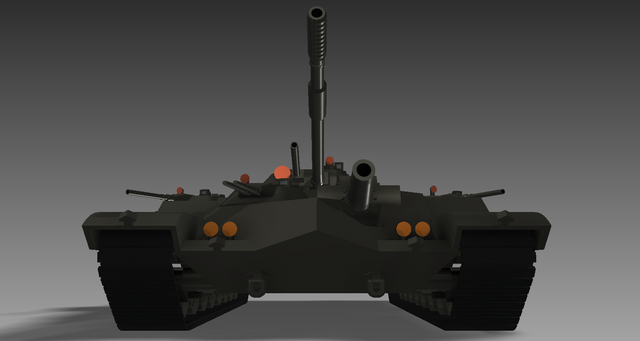
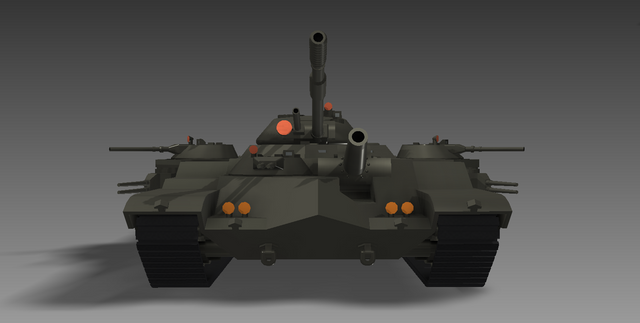
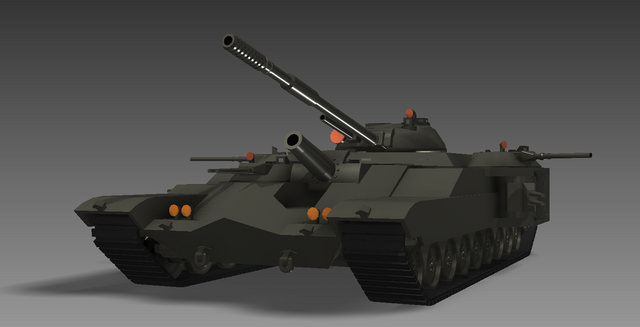
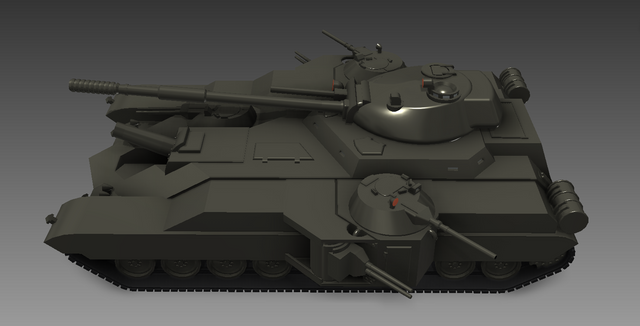
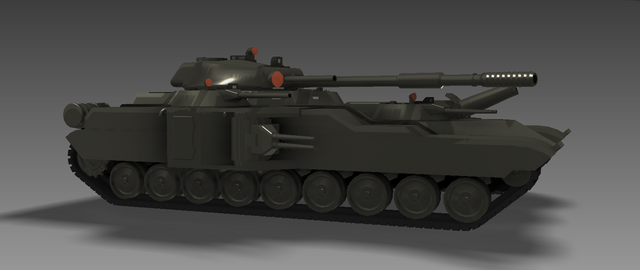
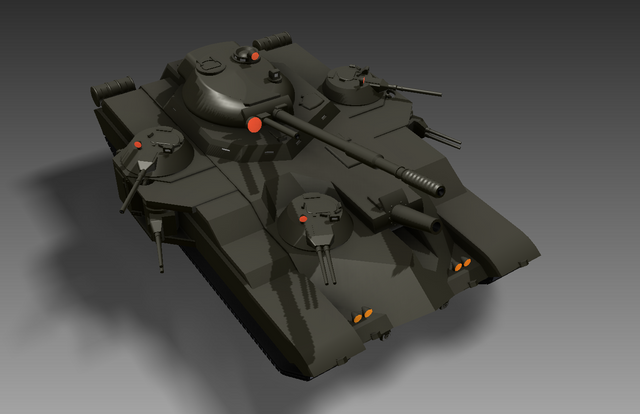
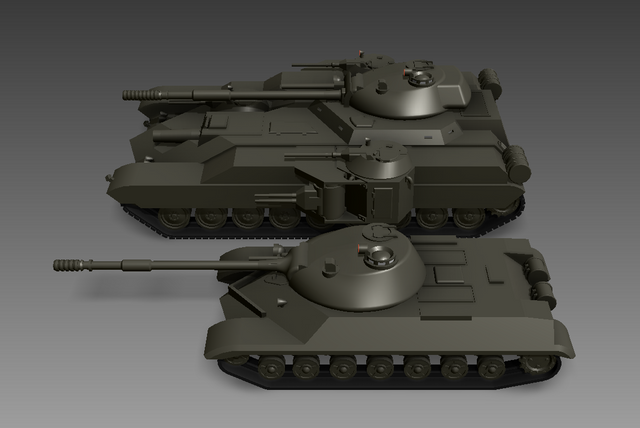
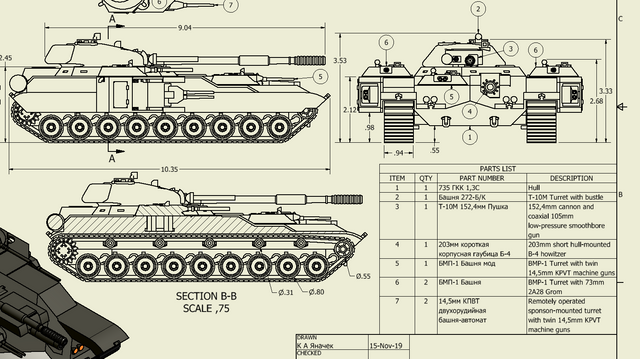
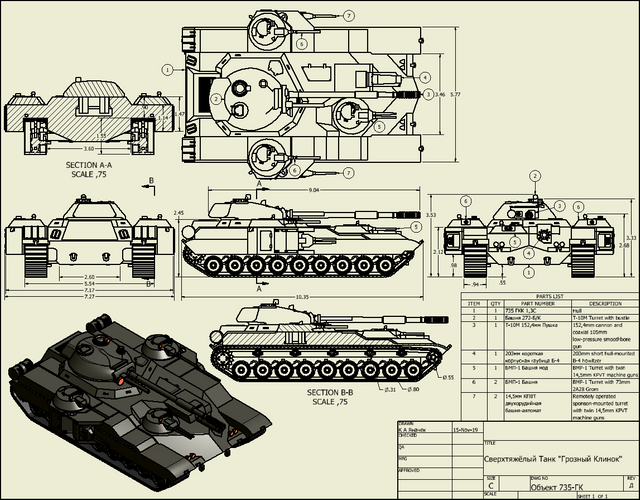
Congratulations @steampunkkaja! You have completed the following achievement on the Steem blockchain and have been rewarded with new badge(s) :
You can view your badges on your Steem Board and compare to others on the Steem Ranking
If you no longer want to receive notifications, reply to this comment with the word
STOPVote for @Steemitboard as a witness to get one more award and increased upvotes!